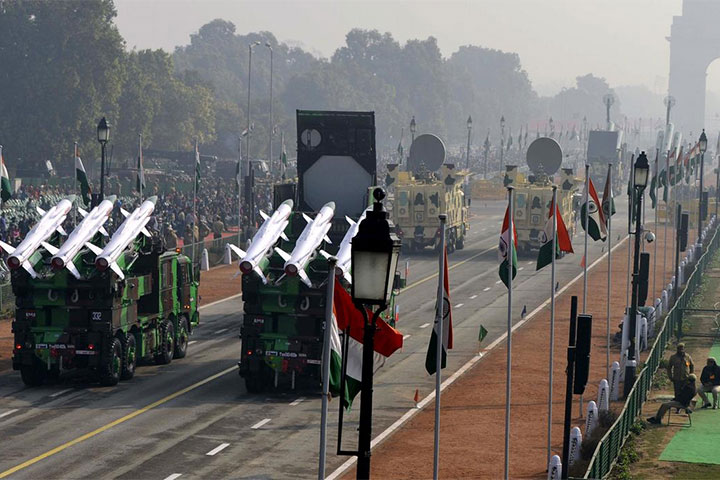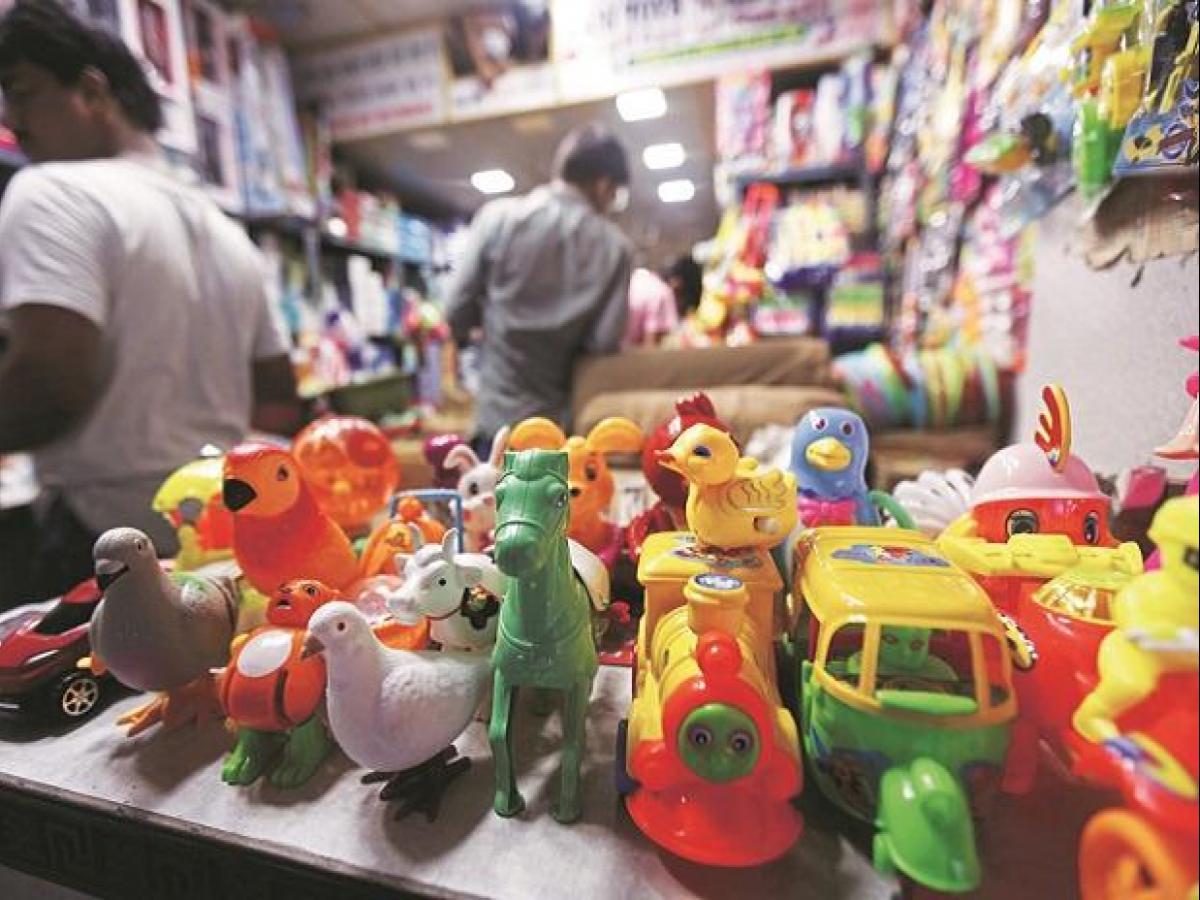Is India's push for self-reliance putting defense at risk?
Worried about its over-reliance on foreign-made weapons, India banned the import of various arms systems and components. Experts warn India's military is now facing equipment shortages.
For those who believe that India is under threat from its militarily powerful neighbors, the question of how and where to acquire modern weapons is a question of life and death.
Right-wing populist Prime Minister Narendra Modi has time and again called for India to become "self-reliant" in procuring arms and defense technology ever since he came to power in 2014.
"The state of the world today teaches us that a self-reliant India is the only path," Modi said in a 2020 address to the nation as a response to the economic impact of the coronavirus pandemic.
Since then, New Delhi has focused on self-reliance in various sectors, including food processing, electronics and military equipment and systems.
But the push towards domestic production and procurement — or indigenization — of weapons and military equipment still has a way to go. India is currently among the top five importers of weapons in the world.
To augment its homegrown development and production capacities, India has placed import bans on a number of military systems and components. The Defense Ministry has also produced lists of items that the Indian armed forces will be forced to procure from local manufacturers.
However, a report by Bloomberg, a business news agency, in September suggested that India is not making "enough weapons locally" to meet its defense needs and is reportedly facing a weapons "shortage" due to Modi's call to make India self-reliant through his "Make in India" policy.
This has raised concerns over whether self-reliance can meet India's defense needs in light of the threats presented by India's most powerful neighbors: China and Pakistan.
Why is India pursuing self-reliance?
Experts say that a clear reason for the government's self-reliance push for the armed forces is that it does not have the funds to go shopping in the global market and pay the kind of prices that countries charge when it comes to high-tech weaponry.
"Without major financial resources to buy arms from global vendors, India is left with little choice but to make its own weaponry," defense analyst Ajai Shukla, a retired Indian Army colonel, told DW.
In order to do this though, Shukla said, India needs to expand its own research and development as well as private manufacturing capacities.
But New Delhi's current push for self-reliance may prove to be several decades too late, with some experts saying that this should have happened when the country first began opening up its economy.
"There are technologies which are the preserve of very few countries. For 35 years, we have been trying to make an aircraft engine in India but we have not been able to and nobody is willing to help," Anil Chopra, a retired Air Marshal of the Indian Air Force and director-general at the New Delhi-based Centre for Air Power Studies, said.
"Those countries which have offered us engine technology, the amounts they are charging are so phenomenal and in the end, they would still perhaps not give us 100% of their technology. They may give us parts of their technology," Chopra said.
"India has been able to manage in automobile, pharmaceutical, software and so many other areas to become a leader in the world. It was important that this push should have come 20 or 25 years back," he added.
Maintaining India's large armed forces
India faces particular threats from China and Pakistan, which both have nuclear weapons as well as "very strong armed forces," Chopra said.
"We have to compete with two very powerful neighbors with whom we have differences of opinion and therefore India has to be militarily strong. We have the second-largest standing army in the world, the fourth-largest air force and the fifth-largest navy. So, to sustain these armed forces, self-reliance is crucial," he said.
He also pointed out how the Russian war in Ukraine — both countries being weapons suppliers to India — has disrupted logistics chains, highlighting the need for domestic procurement.
"We are buying a lot of marine engines from Ukraine. Our Antonov An-32s [military transport aircraft] have come from there. If they are at war and their factories have been bombed, our logistic chains are gone," Chopra said.
What changes are being called for?
Defense analyst Shukla says that one of the challenges India faces when it comes to defense-sector self-reliance is that scientific and technological development in the country is still low.
"Until India begins making weaponry and achieving a high degree of scientific accomplishment, its scientists and engineers cannot move on to the next step which is building more capable weaponry that can deliver victory on the modern battlefield," Shukla said.
"We cannot just work with outdated, low-tech weaponry and equipment. It takes time and investment to climb the technology ladder and develop the quality weaponry that is required to survive in the modern battlefield," he added.
But Chopra traces the problem to the top of the decision-making ladder, claiming that bureaucratic delays are obstructing the move towards self-reliance.
"Saying all this in the public domain and newspapers is one thing but the proof of the pudding is what is on the table. Is the money being given? Are the decisions happening quickly? Those manufacturing these defense items, like the Hindustan Aeronautics Limited and DRDO, are they promising too much and not capable of delivering? These are the questions that need to be asked," he told DW.
Is there a looming weapons shortfall?
Reports in September suggested that India could be at risk of being critically short of helicopters by 2026 and fighter jets by 2030, although Chopra believes India could be facing a "crisis situation" regarding the shortage of jets as early as 2025.
"We are badly off in fighter jets in terms of numbers because the MIG-21 Bison will retire by 2025. But we don't have any means to fill up those four squadrons as of today. The new 114 jets which are supposed to come from abroad will take six to seven years, if they come at all," he said.
"Two other areas where there's a crisis are airborne warning and control systems (AWACS) and flight refueling aircraft. We have too few for the two types of threats we have got on our borders. Pakistan has more AWACS compared to us."
For Shukla, the key issue is the technology gap, pointing to India's inability to produce key parts for aircraft engines.
"When it comes to aero engines, which make up as much as one-third the cost of modern combat aircraft, we don't have the technologies for making them, so we end up importing them," he said.
"The weapons that we have are not world-class and are not of a level where they provide instant superiority on the battlefield. So, the military ends up fighting with lower quality aircraft and vehicles."
In the end, Shukla is in agreement with Chopra that it is the government that will need to free up funds for investment in order to achieve its goal of military self-reliance.
12 Nov 2022,11:17




















 Live Tv
Live Tv


